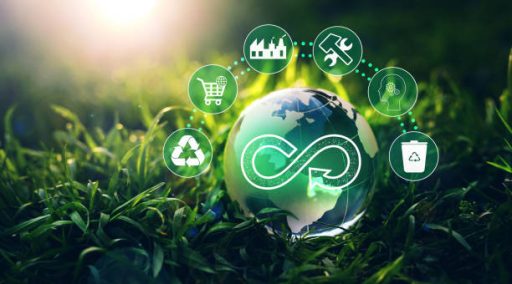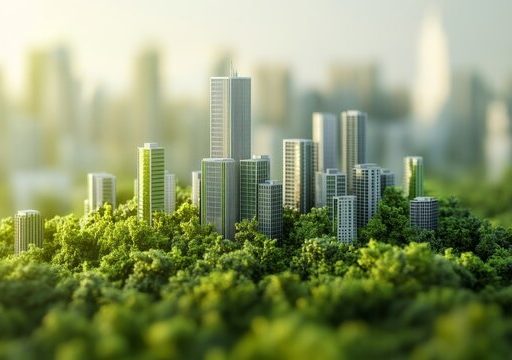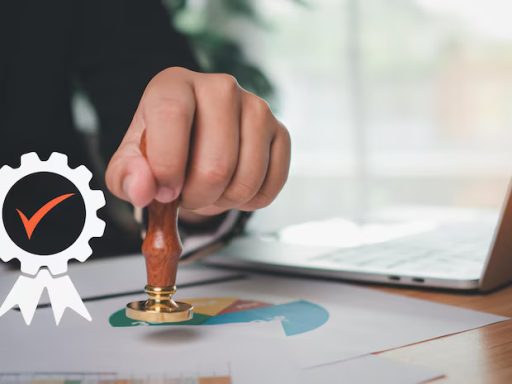The idea of the Circular Economy 2026 represents a significant change from the “take-make-waste” paradigm to one in which resources are reused. This 2026 vision becomes crucial as civilization struggles with resource depletion, climate change, and growing waste. The goal is to change the way we create and consume, which will have a significant influence on business, policy, and individual decisions. Reusable product design, material repurposing, and design-based nature regeneration are all necessary. The linear model is no longer feasible, thus the shift is both ambitious and essential. The United Nations Environment Programme (UNEP) claims that circularity might provide 6 million employment and $4.5 trillion in economic growth.
This article examines waste-reduction tactics, circular models, and the contribution of environmentally conscious consumer behavior to the realization of the circular economy 2026. To assist companies and people in aligning with this future, we will discuss frameworks, comparisons, stakeholder responsibilities, and practical actions.
Core Models of Circular Economy 2026: Rethinking Production and Consumption
Circular Economy 2026 centers on three fundamental models: reuse and refurbish, product-as-service, and closed-loop manufacturing. Products in the reuse and refurbish model are made to be fixed and reused instead of thrown away. Ownership changes to access in the product-as-service paradigm; leasing or sharing services take the place of purchasing. Waste materials are guaranteed to be recycled back into production as secondary raw materials through closed-loop manufacturing. According to the European Commission, designers determine up to 80% of a product’s environmental effect during the design stage.
This is guided by these concepts, which emphasize material cycling, durability, and resource efficiency. This entails planning for durability and recyclability for businesses. For customers, it entails choosing long-lasting goods, choosing services over ownership, and taking part in return policies. Waste decreases, resource extraction decreases, and value stays in the economy longer when manufacturing and consumption follow Circular Economy 2026.
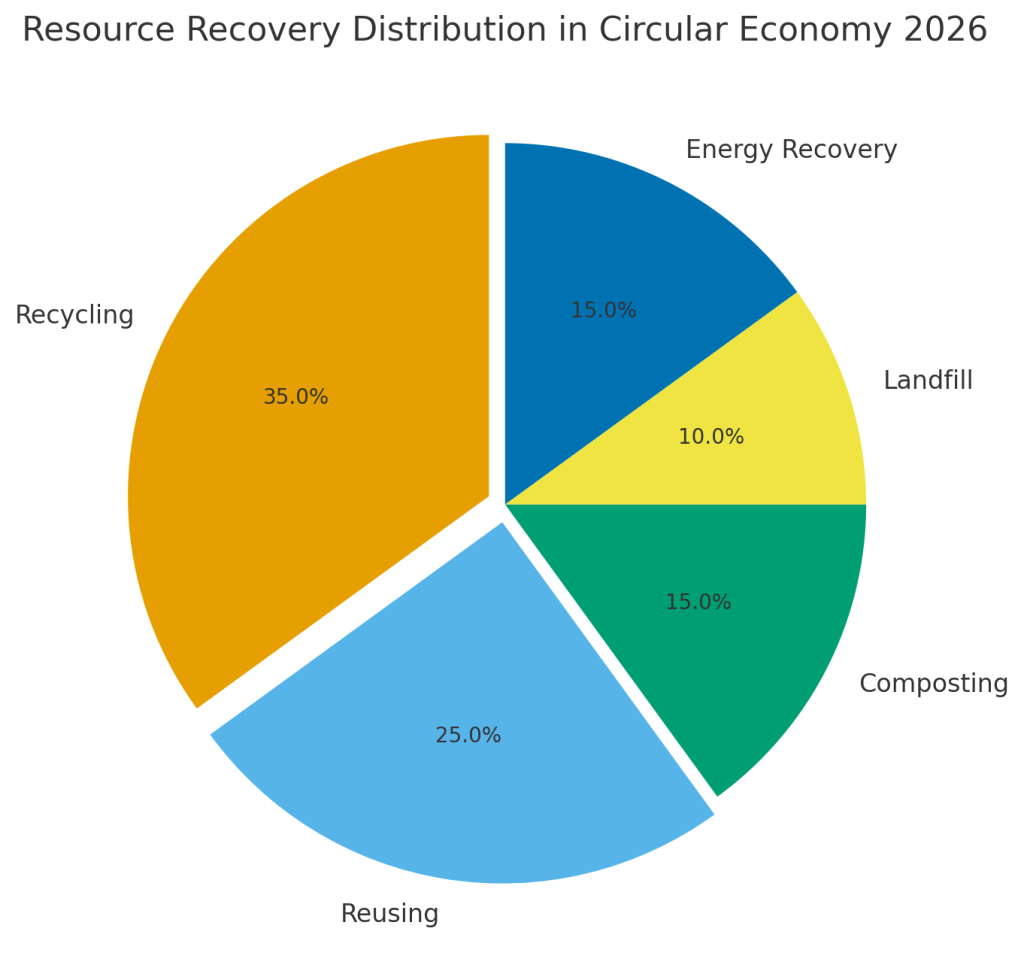
Waste Reduction & Resource Efficiency in Circular Economy 2026
Reducing waste and increasing resource efficiency in all areas is a major goal of sustainable economy. SDG 12 states that decreasing material waste, eliminating fossil fuel subsidies, and enhancing waste management are necessary for efficient sustainable consumption and production. For example, the EU’s Circular Economy Act, which is slated for 2026, intends to improve recycling infrastructure and establish a common market for secondary raw materials. Businesses monitor measures such as trash generation per unit of output, repair rate, and circular material utilization rate under sustainability 2026. Typical performance shifts are seen in the comparison below:
| Metric | Linear Model | Circular Economy 2026 Model |
|---|---|---|
| Material input per product | High | Lower via reuse/recycling |
| Waste generation per product | High | Reduced through design for repair |
| Value retention after use | Low (discard) | High (refurbish/return service) |
Repairing, returning, sharing, and choosing circular-certified items are among the behaviors that consumers who participate in circular economy activities employ. These actions lessen the impact on the environment and open up new economic prospects related to resource loops and trash awareness.
Consumer Behavior & Eco-Conscious Choices in Circular Economy 2026
The shift in consumer behavior toward eco-conscious consumption is one of the most obvious features of Circular Economy 2026. Customers must take an active role in the circular model’s expansion by selecting long-lasting goods, taking part in take-back programs, and preferring services over ownership. Manufacturers and retailers increasingly mark products with circular credentials, repairability, and lifespan effect. The European Commission highlights how customer demand affects design by stating that “up to 80% of products’ environmental impact is determined at design phase.”
When it comes to sustainability, customers steer clear of single-use products, use sharing platforms, and select reconditioned devices. Companies that support these behaviors foster loyalty, trust, and innovative product-life extension business models. In the end, sustainable economy envisions a market where value is derived from experience, longevity, and circularity and where consumption is separated from resource degradation.
Circular Supply Chains & Business Transformation
For businesses to thrive in the sustainable economy of 2026, supply networks must be transformed. Conventional linear chains include extraction, production, consumption, and disposal. Circular supply chains redesign that order by obtaining secondary materials, planning for disassembly, running reverse logistics, and preserving value loops. The EU plans to implement the Circular Economy Act in 2026, covering manufacturers of textiles, electronics, and packaging. Businesses involved in circular economy 2026 monitor the percentage of circular materials, set up leasing or refurbishing processes, and implement product pass-back mechanisms. Important modifications consist of:
- Extended Producer Responsibility programmes
- Digital product passports to monitor life-cycles
- Service-based revenue models instead of one-time sales
Businesses that use circular economy concepts benefit from reduced material costs, improved brand distinctiveness, and increased resilience to resource shocks. There will be fewer landfills, less pollution, and more jobs in remanufacturing, recycling, and renovation for society.
Comparison & Metrics for Circular Economy 2026: Measures That Matter
Strong measures and comparisons are essential for anchoring Circular Economy 2026. In terms of material consumption, waste, and value retention, stakeholders contrast linear versus circular approaches. A list of important indicators is provided below:
| Indicator | Linear Economy | Circular Economy 2026 Target |
|---|---|---|
| Circular Material Use Rate | ~12 % average (EU 2023) (Environment) | ~24 % or above by 2030 |
| Product Return / Reuse Rate | Low | Significantly higher |
| Value Lost After Use (as % of product) | 80-90 % | <50 % |
Additionally, companies practicing Circular Economy 2026 monitor
• number of repair facilities engaged
• percentage of consumers enrolling in leasing or sharing
• waste per unit of production
Initiatives like waste-to-resource flows, modular design, and consumer take-back programs reflect the change. Circular economy 2026 will become more than simply rhetoric when these measures show favorable trends.
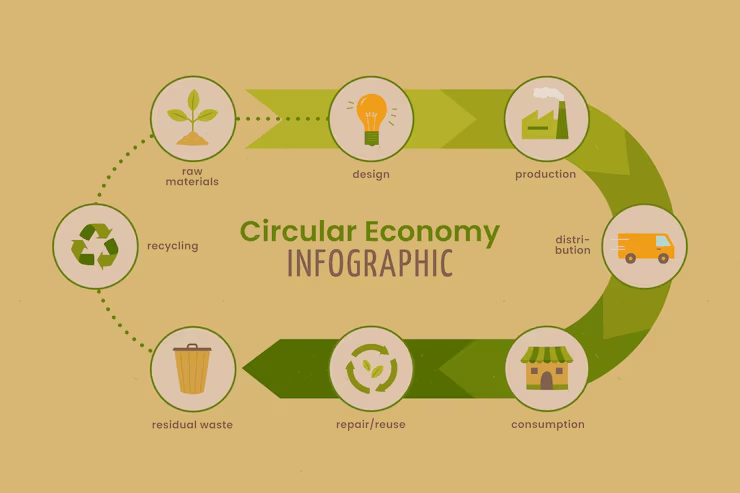
Systems, Policies & Collaborations
Systemic changes in legislative frameworks, funding, cross-sector partnerships, and cultural norms are necessary to scale the circular economy by 2026. Policymakers must use regulations and incentives to promote circularity in product design. The EU’s 2026 Circular Economy Act plan highlights the urgency. To create circular infrastructure, businesses must work with design houses, recyclers, logistics companies, and digital platforms. Reuse, sharing, and sustainable consumption are the new habits that consumers need to adopt. Campaigns for awareness and education help with this. Funding options such as blended financing make circular initiatives possible. Adopting a sustainable economy also entails global alignment as circular resources go across the world and supply chains span national boundaries. Coordinated activity reduces resource use, lessens the impact on the environment, and makes circular production and consumption commonplace.
Challenges & Opportunities
Circular Economy 2026 has lofty goals, but there are a number of obstacles to overcome, including poor consumer awareness, fragmented regulations, market pricing disadvantages for secondary materials, and technology gaps in recycling. For instance, despite the need for circular materials, recycling rates are declining globally. However, there are a ton of opportunities. Markets for secondary materials have the potential to liberate billions of dollars. New leasing, repair, and service business models create jobs. Digital platforms enable tracking, transparency, and resource flows. Better goods and services are available to consumers that adopt circular behaviors. To put it briefly, this is a stimulus for creativity rather than merely a limitation. Stakeholders who take proactive measures to resolve obstacles will lead the transformation and capture its value.
Common Questions on Circular Economy 2026
1. What is Circular Economy 2026?
It refers to the vision and roadmap of shifting global consumption and production toward a circular model by 2026.
2. How does Circular Economy 2026 differ from recycling?
While recycling is part of it, Circular Economy 2026 focuses on designing out waste, keeping materials in use and offering services over product ownership.
3. How can consumers support Circular Economy 2026?
By choosing durable or refurbished products, participating in sharing/leasing, returning items for reuse and avoiding single-use consumption.
4. Are businesses ready for Circular Economy 2026?
Some are; but full readiness requires supply-chain redesign, policy support and consumer demand alignment.
5. What benefits does Circular Economy 2026 bring?
Reduced resource extraction, lower waste and emissions, new economic opportunities, stronger brand loyalty and resilient supply chains.
Conclusion
The transition to a circular economy by 2026 will change the way we create, consume, and live. It encourages innovation at every stage of the product lifecycle and challenges traditional models. Reduced environmental impact, more wealth creation, and a resilient economy built for the future are the big rewards when consumers, companies, and policymakers come together behind this goal. The idea of the sustainability serves as a reminder that sustainable consumption is an improvement in the production, utilization, and conservation of resources rather than a sacrifice. Adopting this paradigm now paves the way for a day where resource value is maximized, waste is uncommon, and reuse is commonplace. Let’s establish circular economy 2026 as the norm rather than simply a catchphrase.


